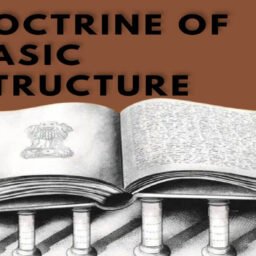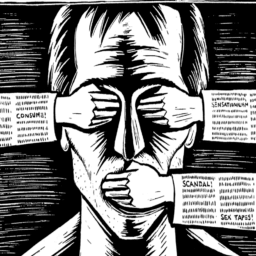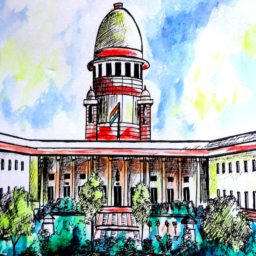INTRODUCTION
Well before India became a free democracy, one of the most controversial issues in Indian politics was the problem of electoral reservations for backward caste classes. At the time, nationalists in the Congress party regarded any effort to advance the interests of any segment of Indian society with apprehension. B.R. Ambedkar, the father of the Indian Constitution, disagreed with conventional thought on this, arguing that even though the Indian government had the best of intentions; it would not be able to do anything to resolve Dalit problems unless it had Dalit representation.
In one of the round table conferences held in London in 1930 to determine the agenda for constitutional change in India, Ambedkar said “We feel that nobody can remove our grievances as well as we can, and we cannot remove them unless we get political power in our own hands.” People gradually began to see Ambedkar’s point of view. Political quotas for scheduled castes (SCs) and scheduled tribes (STs) have existed since 1950, according to Article 332[1] of the Constitution.[2]
Discrimination in India has such deep roots that social and economic disparities are inextricably linked, though in highly complicated ways. Reservations for various groups in higher education are also required, not because they are ideal tools for eradicating long-standing discrimination, but because they are the most practical tool for moving in this direction. Due to the nature of Indian culture, social discrimination and exclusion can only continue and develop if such steps are not taken.[3]
For many reasons, India’s reservation scheme, like affirmative action (AA) policies around the world, is vilified. For years, opponents of the reservation system have claimed that the scheme is unjust because it refuses entry to eligible and deserving applicants for coveted positions. One, it puts beneficiaries at risk of disappointment due to possible “mismatch,” since they are admitted to institutions and courses for which they may not be prepared. Two, it stigmatizes them twice: in addition to the stigma of their gender, it also stigmatizes them for their incompetence.[4]
Even among the Socially Advanced Castes (SACs), i.e. the non-Scheduled Castes (SCs), non-Scheduled Tribes (STs), and non-Socially and Educationally Backward Castes, there are poor people (SEBCs). They, too, need assistance. The question is what the real problem they are dealing with is, and what is the most constitutionally sound and long-term solution.
The word “backward class of citizens” has come to mean the SCs, STs, and SEdBCs, as established by the Supreme Court in the Mandal case (Indra Sawhney v. Union of India[5]) judgment. These are not exceptions, but special provisions aimed at ensuring that the concept of equality embodied in Articles 14[6], 15(1)[7], and 16(1)[8] is effectively implemented in the unique inherited Indian context of a society rife with social disparities.[9]
In terms of politics, India’s caste quota scheme is in good shape. In a 2018 survey in Uttar Pradesh, 69% of adults approved of caste quotas, including a plurality of forwarding castes. Subquotas for the Extremely Backward Castes, as well as the recent 10% quota for the economically weaker parts of the forward castes, tend to be common. Reservation is common among relatively peaceful farmer groups such as the Jats, Patels, and Marathas, whose demands for quotas have led to clashes with groups that already have quotas or challenges to the Supreme Court’s 50% reservation cap.[10]
Reservations for Economically Weaker Sections (EWS) are being introduced in recruitment for civil posts and government services, as well as admission to educational institutions. EWSs who are not covered by the reservation system for SCs, STs, and OBCs will be given 10% reservation in direct recruitment to civil posts and services in the government, as well as admission to universities.[11]
The benefit will apply only to families with a total annual income of less than Rs. 8 lakh, according to the Centre’s rules. All sources of income are considered, including wages, agriculture, industry, and occupation, and it must have been received in the fiscal year preceding the year of application.
People who owned five acres of agricultural land or more, a residential flat of 1,000 square feet or more, a residential plot of 100 square yards or more in notified municipalities, or a residential plot of 200 square yards or more in areas other than notified municipalities were all exempt from the benefits, regardless of their family income.
The person who requested the reservation, his or her parents and siblings under the age of 18, as well as his or her spouse and children under the age of 18, will be considered family.[12] The proposed reservation would be in addition to the Scheduled Castes, Scheduled Tribes, and Other Backward Classes’ current 50% reservation, bringing the overall reservation to 60%.[13]
A framework like this will allow for fine-grained changes based on the most up-to-date social science data about the socioeconomic status of specific groups and the relative importance of community and individual variables. It will also shift discussions about reservation away from binary demands at the community level (“we are disadvantaged”) and toward questions of scale at the person level (“how disadvantaged am I?”).
The reservation system will be able to return to its original goal of making India a more just society under such a system.[14]
CONCLUSION
The 103rd Constitutional Amendment[15] established a quota for the disadvantaged. Several interest organizations and individuals have since questioned this. Individuals and non-governmental organizations (NGOs) advocating for excellence and effectiveness in administration, as well as other diverse groups, argue that this would reduce their share of quotas in jobs and admissions in the general category.
The EWS quota was earmarked in the ‘spirit’ of offering equal chances in education and work to all. Lack of clarity on implementation creates opportunities for outcomes to be distorted or even manipulated, undermining policy objectives. It has the potential to mislead the public and hold university or employment placements in limbo for years while legal challenges are resolved. Unless these implementation concerns are resolved, India’s new EWS reservation policy is headed in this way.
Author(s) Name: Devesh Badoliya (Student, Rajiv Gandhi National University of Law, Punjab)
References:
[1] India Const. art. 332.
[2] The Questionable Benefits of Quota Politics, (last accessed on Apr. 22, 2021), https://www.livemint.com/Sundayapp/vOKFiLLiHerFlepgUftOSO/The-questionable-benefits-of-quotapolitics.html.
[3] Jayati Ghosh, ‘Case for Caste-Based Quotas in Higher Education’, Economic and Political Weekly, vol. 41, no. 24, 2006, pp. 2428–2432, JSTOR, accessed on Apr. 22, 2021, www.jstor.org/stable/4418343.
[4] Ashwini Deshpande, ‘Quotas are not a Magic Wand to Resolve Problem of Discrimination in Universities’, accessed on Apr. 22, 2021, https://thewire.in/caste/quotas-not-magic-wand-resolve-problem-discrimination-universities
[5] Indra Sawhney v. Union of India, AIR 1993 SC 477.
[6] India Const. art. 14.
[7] India Const. art. 15(1).
[8] India Const. art. 16(1).
[9] P.S. Krishnan, ‘Quota for Poor: Constitutional and Social Issues, Implications’, The Indian Express, accessed on Apr. 22, 2021, https://indianexpress.com/article/explained/quota-for-poor-constitutional-and-social-issuesimplications-5529290/.
[10] Alexander Lee, ‘Redesigning India’s Reservation System’, Hindustan Times, accessed on Apr. 22, 2021, https://www.hindustantimes.com/opinion.
[11] Reservation for EWS, accessed on Apr. 22, 2021, https://vikaspedia.in/education/career-guidance/reservation-forews
[12] Government Notifies Quota for EWS, The Hindu, accessed on Apr. 22, 2021, https://www.thehindu.com/news/national/telangana/government-notifies-quota-for-ews/article33786155.ece
[13] Modi govt announces 10 per cent quota for economically backward in general category, The Economic Times, accessed on Apr. 22, 2021, https://economictimes.indiatimes.com/news/politics-and-nation/big-move-by-modi-government-ahead-of-polls-announces-10-quota-for-upper-castes-reports/articleshow/67418661.cms?from=mdr
[14]Supra Note 5.
[15] India Const. art 15 and 16, amended by The Constitution (One Hundred and Third) Amendment Act, 2019.
















